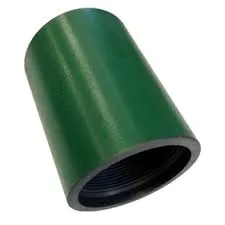- Afrikaans
- Albanian
- Amharic
- Arabic
- Armenian
- Azerbaijani
- Basque
- Belarusian
- Bengali
- Bosnian
- Bulgarian
- Catalan
- Cebuano
- Corsican
- Croatian
- Czech
- Danish
- Dutch
- English
- Esperanto
- Estonian
- Finnish
- French
- Frisian
- Galician
- Georgian
- German
- Greek
- Gujarati
- Haitian Creole
- hausa
- hawaiian
- Hebrew
- Hindi
- Miao
- Hungarian
- Icelandic
- igbo
- Indonesian
- irish
- Italian
- Japanese
- Javanese
- Kannada
- kazakh
- Khmer
- Rwandese
- Korean
- Kurdish
- Kyrgyz
- Lao
- Latin
- Latvian
- Lithuanian
- Luxembourgish
- Macedonian
- Malgashi
- Malay
- Malayalam
- Maltese
- Maori
- Marathi
- Mongolian
- Myanmar
- Nepali
- Norwegian
- Norwegian
- Occitan
- Pashto
- Persian
- Polish
- Portuguese
- Punjabi
- Romanian
- Russian
- Samoan
- Scottish Gaelic
- Serbian
- Sesotho
- Shona
- Sindhi
- Sinhala
- Slovak
- Slovenian
- Somali
- Spanish
- Sundanese
- Swahili
- Swedish
- Tagalog
- Tajik
- Tamil
- Tatar
- Telugu
- Thai
- Turkish
- Turkmen
- Ukrainian
- Urdu
- Uighur
- Uzbek
- Vietnamese
- Welsh
- Bantu
- Yiddish
- Yoruba
- Zulu
tubing and casing
Tubing and Casing Essential Components in Oil and Gas Production
In the oil and gas industry, tubing and casing play a pivotal role in the safe and efficient extraction of hydrocarbons from deep underground reservoirs. Understanding these two components is crucial for anyone involved in drilling operations, as they serve specific functions that ensure the integrity and productivity of oil and gas wells.
Casing The Protective Shell
Casing is a series of pipes installed in the wellbore to protect it from collapse and the external environment. Once a well has been drilled to the desired depth, casing is cemented into place to create a barrier between the well and surrounding geological formations. This helps prevent unwanted fluids, such as groundwater, from entering the well and protects the well from potential collapse due to geological pressures.
Typically made from carbon steel, casing is available in various grades and sizes, allowing engineers to select the most appropriate type based on the well’s depth and specific geological conditions. The most common types of casing include surface casing, intermediate casing, and production casing. Each serves unique functions, such as providing stability to the wellbore, creating a seal for preventing fluid migration, and enabling the production of hydrocarbons.
Tubing The Conduit for Production
On the other hand, tubing is the inner pipe installed within the casing after the completion of the well. Its primary function is to transport hydrocarbons from the reservoir to the surface. Tubing allows for efficient production by providing a controlled path for the oil and gas to flow upward, minimizing pressure losses and facilitating the movement of production fluids.
tubing and casing

Unlike casing, which remains permanently in place once set, tubing can be removed or replaced during the life of the well. Tubing is specially designed to withstand the corrosive effects of production fluids and the varying pressures involved in the extraction process. It comes in different diameters and thicknesses to accommodate different production rates and well conditions.
The Interplay Between Tubing and Casing
The relationship between tubing and casing is vital for the overall success of oil and gas operations. Properly installed casing secures the well and prevents contamination, while tubing ensures that production occurs efficiently. Decision-making concerning the materials, sizes, and arrangements of casing and tubing must consider factors like formation pressures, fluid types, and the overall design of the well.
Continuous advancements in technology have led to improved materials and design techniques for both tubing and casing. For instance, the use of corrosion-resistant alloys and advanced cementing techniques enhances the longevity and reliability of wells, ultimately boosting production efficiency.
Conclusion
In summary, tubing and casing are fundamental to the success of oil and gas extraction. Understanding their roles not only helps in designing efficient wells but also ensures the protection of both the environment and the integrity of the extraction process. As technology continues to evolve, the future for tubing and casing looks promising, with enhancements poised to improve operational efficiencies and sustainability in the oil and gas sector.
-
Tubing Pup Joints: Essential Components for Oil and Gas OperationsNewsJul.10,2025
-
Pup Joints: Essential Components for Reliable Drilling OperationsNewsJul.10,2025
-
Pipe Couplings: Connecting Your World EfficientlyNewsJul.10,2025
-
Mastering Oilfield Operations with Quality Tubing and CasingNewsJul.10,2025
-
High-Quality Casing Couplings for Every NeedNewsJul.10,2025
-
Boost Your Drilling Efficiency with Premium Crossover Tools & Seating NipplesNewsJul.10,2025







